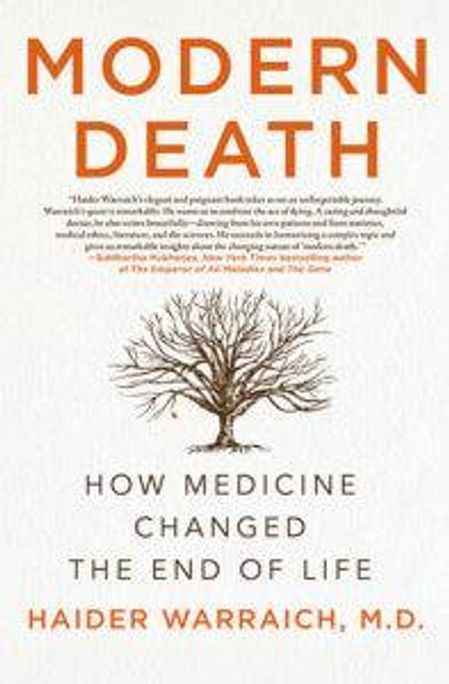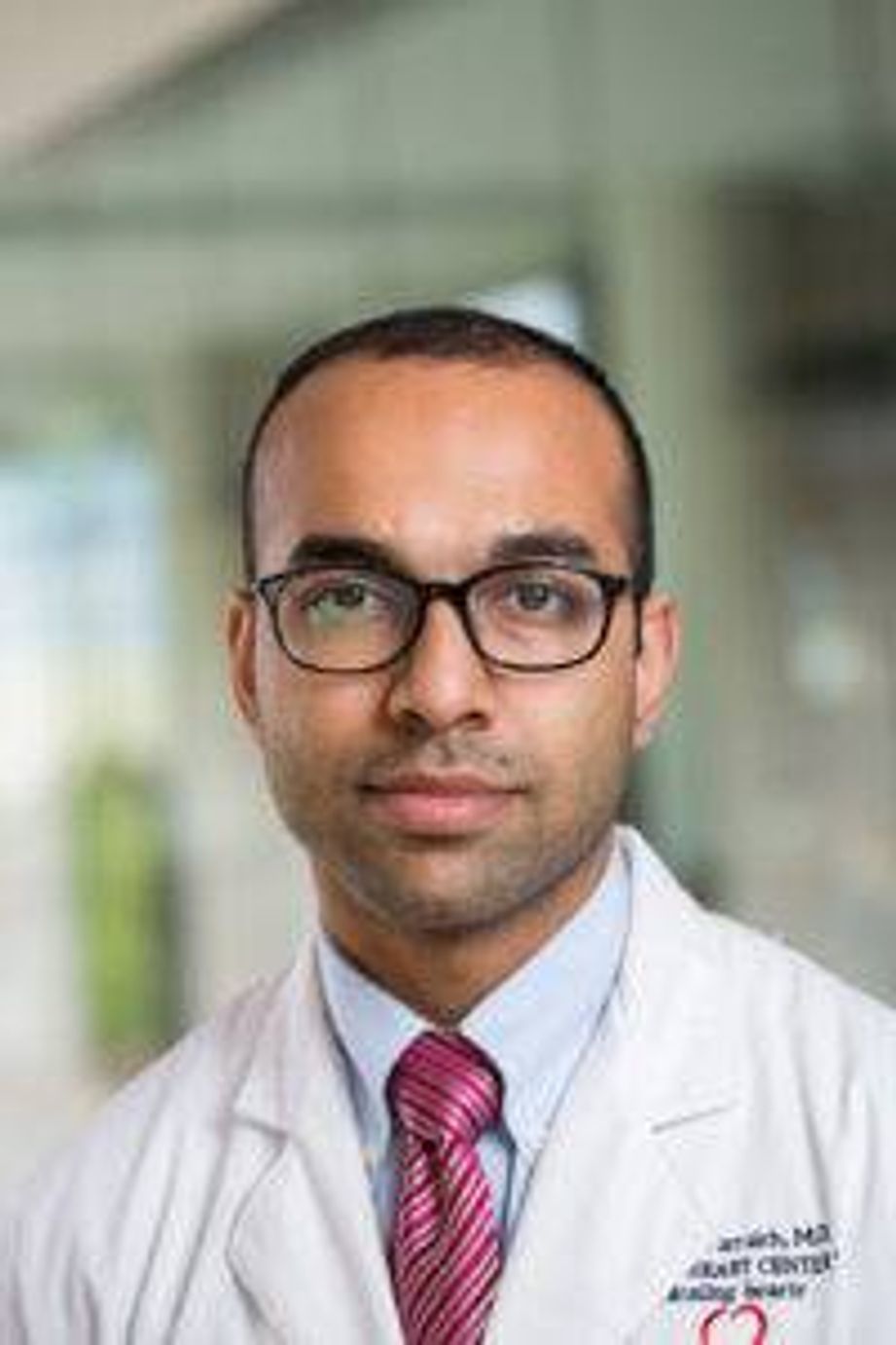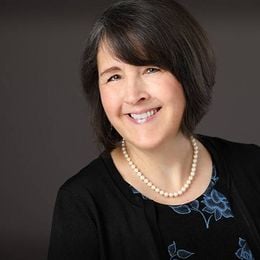'Modern Death' Is Longer, More Complicated and More Public
A doctor explores scientific and cultural shifts in a sweeping debut book
From harrowing stories of patients in their last days to the role of religion in death to legal battles over when to “pull the plug,” Dr. Haider Warraich explains what death looks like in the 21 century.
In his compelling book, Modern Death: How Medicine Changed the End of Life, Warraich examines death from the cellular to the societal level. He places accounts of his own patients in a rich context of science, philosophy and history.
Today, he writes, death is much more prolonged than it used to be. The line between life and death is blurred. And dying patients — often unbeknownst to their doctors — are reaching out to share details of their journeys on social media.
Warraich graduated from medical school in Pakistan in 2009. He did his residency in internal medicine at Harvard Medical School’s Beth Israel Deaconess Medical Center, one of the main teaching hospitals of Harvard Medical School. He is currently a fellow in cardiology at Duke University Medical Center.
The following excerpt, about death in the age of social media, is from Modern Death: How Medicine Changed the End of Life, copyright © 2017 by the author and reprinted with permission of St. Martin's Press, LLC.:
#WhenDeathIsShared
Loneliness is about as much of a hallmark of how we die today as anything else is. As we age, we walk up the steps of a pyramid. With every level, the air gets just a tad thinner, and as the pyramid shrinks, so does our circle of friends and family.

Roger Angell, now in his 90s, wrote in The New Yorker, “We geezers carry about a bulging directory of dead husbands or wives, children, parents, lovers, brothers and sisters, dentists and shrinks, office sidekicks, summer neighbors, classmates and bosses, all once entirely familiar to us and seen as part of the safe landscape of the day.”
While much of this is a side effect of the radical extension in life span that humanity has achieved, most isolation experienced by the dying is an artifact of how the health system has evolved. Most folk, as soon as they fall sick, end up in hospitals, nursing homes, rehab facilities, and for quite a few, that is where they stay for vast swaths of what will be the remainder of their lives.
The disability that precedes death impedes people from going on about their lives the way they would want to. They can’t go down to the bowling alley, or the park, or the bar, to talk to old friends, or to make new ones.
Patients Reaching Out Online
This, however, has begun to change, and unsurprisingly it is patients who are driving this shift. Increasingly, people have begun to document their journeys through illness, remission and recurrence virtually — on the Internet. Whether in the form of blogs, Facebook posts, tweets or videos, patients facing what appears to be the end take to the Internet to share their thoughts.
I was taking care of a young man, just in his early 20s, who was diagnosed with a rare, malignant tumor. Every day I went to see him during morning rounds, he seemed lost. He would rarely acknowledge my presence, preferring to stare into his laptop, and once told me that he wasn’t much of a morning person.
And then one day, to my utter surprise, he was sitting up in bed, cheerfully greeting me at 7 in the morning. When I asked him what was behind the sudden positivity in his disposition, he told me that he had to leave the hospital later that day. I was surprised — he had an active infection, was getting antibiotics through an intravenous line and had tubes draining pus from his gallbladder.

Something to Live For
From a purely medical perspective, it was a most absurd request. Before I could tell him that, though, he turned his laptop around so that the screen was facing me. He had a web page open, which displayed a picture of him in patient clothes giving two thumbs-up and a wider smile than I had ever managed to eke out of him. It was a fundraising website, and he had an event planned later that day.
I realized then that the only thing that gave him joy was playing out somewhere else, somewhere he wasn’t being poked incessantly with syringes, having high-grade fevers and negotiating pain medication with nurses and doctors.
I had to get creative to help him make it to his fundraiser. We decided to time his antibiotics such that he had a window wide enough that he could go and then come back to the hospital the same day.
Nowadays, countless patients with life-threatening illnesses take to the web to log their pain, their suffering and of course, the peaks that dance with the troughs, the moments of elation and escape.
Modern Death: Blogging in Defiance of Cancer
One such blogger was a twentysomething girl, who went by the pseudonym Oblomov, the name of an underappreciated Russian novelist. She would write about her journey with cancer through diagnosis, remission, and then, ominously, recurrence. In a post titled “The Diary of Another Nobody,” she wrote, “My blogging and note-keeping is . . . an empowering gesture of defiance against the march of time, people’s short memories and the indifference of the universe.”
Her blogs, though, precluded her from being a nobody. Recognized by Clive James in a profile in The New York Times, she had accumulated numerous followers, many of whom cheered her on as they would a marathoner, holding out bottles of water and Gatorade as she panted along. Her real name was Shikha Chabra, and by the time I got around to getting in touch with her, she had stopped blogging. She had passed away.
Medical Establishment Standing ‘In the Way’
Spurred by the Internet, patients and their family members have begun to talk about death in a way that it has never been talked about before. If anything, it is the medical establishment that stands in the way of an even broader conversation.
In response to a piece I wrote for The New York Times describing what people’s final moments in the hospital look like, a physician wrote in the comments section, “As a practicing oncologist, I find it a bit strange to explore these thoughts in such a public forum (yes, I understand the irony involved in myself doing the same at this moment). If death is sacred, and the moment so private, why write a book or dramatize something that literally thousands of health care providers do every year?”
Immediately, another reader retorted, “Why publicize it in a book? Precisely for the reason that death is NOT ‘sacred,’ it’s inevitable. Yet we as Americans have pushed death so far away that horrific, futile efforts and procedures are inflicted on dying patients without either real thought, or clear understanding, because somehow, modern medicine is going to save the day. Modern medicine can NOT ever save the inevitable day, but can only postpone it. Patients and their family members need to KNOW what can & does happen as loved ones come close to death. They need to know, exactly what may happen, what it can mean in terms of longevity, and what it can mean to the patient in terms of their quality of life.”
Bringing Death Out in the Open
To date, death has been shrouded in mystery, sometimes because no one knew any better and sometimes on purpose. In most cultures, talking about death has been shunned, thought to be a bad omen. Death is now being engaged with in a way it has never been before, by people faced with imminent death as well as by those far from their mortal ends. It is this cultural shift that may help more than any scientific innovation to improve how we die.
Next Avenue Editors Also Recommend:


